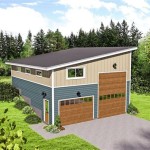Average Cost Of Garage Conversion: A Comprehensive Guide
Converting a garage into a usable living space is a popular home improvement project, offering the potential to significantly increase a property's value and functionality. This transformation might involve creating an extra bedroom, a home office, a playroom, or even a small apartment. However, understanding the average cost of a garage conversion is crucial for budgeting and planning purposes. The expenses involved can vary widely depending on several factors, making thorough research and careful consideration essential before embarking on such a project.
The national average cost for a standard garage conversion typically ranges from $10,000 to $30,000. This figure represents a broad estimate, and the actual cost can fluctuate dramatically based on the project's scope, the chosen materials, the complexity of the construction, and the regional location. A simple conversion focusing on minimal alterations, such as adding insulation and finishing the walls, might fall on the lower end of this range. Conversely, a more extensive renovation involving significant structural changes, plumbing modifications, and electrical upgrades will likely push the cost toward the upper end or even beyond.
It's also important to distinguish between attached and detached garages. Attached garages often have existing connections to the main house's utilities, such as electricity and heating/cooling systems, potentially reducing the cost of running these services to the converted space. Detached garages, on the other hand, often require more extensive work to establish these connections, leading to higher overall expenses. The necessity of bringing water and sewer lines to a detached garage for a bathroom or kitchenette will further increase the project's cost.
Before obtaining any quotes or making firm decisions, homeowners should check local zoning regulations and building codes. Many municipalities require permits for garage conversions, and failing to obtain these permits can result in fines and the need to undo the work. Compliance with building codes is crucial to ensure the safety and habitability of the converted space, and it often involves adherence to specific standards for insulation, ventilation, fire safety, and structural integrity. These codes can vary significantly among regions, impacting the overall cost of the conversion.
Key Cost Factors in Garage Conversions
Understanding the specific factors that influence the cost of a garage conversion is essential for creating an accurate budget. These factors encompass materials, labor, the extent of structural modifications, and the complexity of utility connections.
1. Structural Modifications: Garages are typically built with a different purpose in mind than living spaces. They may lack adequate foundations, proper insulation, or sufficient ceiling height. Addressing these issues can significantly impact the project's cost. For instance, reinforcing the foundation to support additional weight or raising the roof to create more headroom will involve significant labor and material expenses. Adding windows and doors to improve natural light and ventilation also represents a structural alteration with associated costs.
2. Utility Connections: Plumbing and electrical work represent a significant portion of the overall cost, particularly if the garage is being converted into a bathroom, kitchen, or bedroom. Running new water lines, sewer lines, and electrical wiring requires the expertise of licensed professionals, and the complexity of these connections will influence the price. The need for a new electrical panel or upgrades to the existing panel can further increase the expenses. Heating and cooling are also essential considerations. Ductwork extensions from the existing HVAC system may be sufficient for an attached garage, while a separate heating and cooling system, such as a mini-split unit, might be necessary for a detached garage or if the existing system cannot handle the added load.
3. Interior Finishes: The choice of interior finishes, such as flooring, wall coverings, and ceiling treatments, will also contribute to the overall cost. Basic finishes, such as carpet and drywall, are generally more affordable than premium options like hardwood flooring and custom plasterwork. The level of detail and customization in the design will also influence the cost. A simple, functional space will typically be less expensive to finish than a highly stylized or luxurious design.
Furthermore, the addition of features like built-in shelving, custom cabinetry, or architectural details will add to the finishing costs. The selection of windows and doors also contributes significantly. Energy-efficient windows and doors, while initially more expensive, can offer long-term savings on energy bills. The type of insulation chosen for the walls, ceiling, and floor also impacts the overall expense. High-performance insulation can improve energy efficiency and comfort but comes at a higher initial cost.
The cost of labor is a significant component of the overall budget. Hiring experienced and qualified professionals, such as contractors, plumbers, and electricians, is crucial to ensure the work is done correctly and safely. Labor costs vary depending on the region and the complexity of the project. Obtaining multiple quotes from different contractors is recommended to compare prices and ensure a fair rate. It's essential to verify that the contractors are licensed and insured to protect against potential liabilities.
Breaking Down the Cost Components
To gain a clearer understanding of the average cost of a garage conversion, it's helpful to break down the project into its individual cost components. This provides a more detailed picture of where the money is being spent and allows for more accurate budgeting.
1. Permits and Design Fees: Before any construction begins, obtaining the necessary permits from the local municipality is essential. Permit fees vary depending on the location and the scope of the project. Architectural design fees may also be necessary if the conversion requires significant structural changes or a custom design. These fees can range from a few hundred dollars to several thousand dollars, depending on the complexity of the plans.
2. Foundation and Structural Work: This component can be one of the most expensive, especially if the garage's existing foundation is inadequate or if structural modifications are required. Reinforcing the foundation can cost several thousand dollars. Raising the roof or adding support beams will also add to this cost. The addition of new windows and doors requires framing and structural alterations. The cost of these alterations depends on the size and number of openings. Addressing any existing structural issues, such as cracks in the foundation or damaged framing, should be included in this budget component.
3. Insulation: Proper insulation is essential for creating a comfortable and energy-efficient living space. The type and amount of insulation required will depend on the climate and local building codes. Common types of insulation include fiberglass batts, spray foam, and rigid foam boards. Spray foam insulation is generally more expensive but provides superior insulation value. The cost of insulation can range from a few hundred dollars to several thousand dollars, depending on the size of the garage and the type of insulation used.
4. Electrical Work: Running new electrical wiring, installing outlets and switches, and connecting lighting fixtures represent a significant cost component. The need for a new electrical panel or upgrades to the existing panel will add to the expense. Hiring a licensed electrician is essential to ensure the work is done safely and complies with local codes. The cost of electrical work can range from several hundred dollars to several thousand dollars, depending on the complexity of the wiring and the number of fixtures and outlets.
5. Plumbing Work: If the conversion includes a bathroom or kitchen, plumbing work will be necessary to run water lines and sewer lines. This can involve connecting to the existing plumbing system or installing a new system. The cost of plumbing work depends on the complexity of the connections and the distance to the main water and sewer lines. Hiring a licensed plumber is essential to ensure the work is done correctly and complies with local codes. The cost of plumbing work can range from several hundred dollars to several thousand dollars, depending on the scope of the project.
6. Heating and Cooling: Providing adequate heating and cooling is essential for creating a comfortable living space. Options include extending the existing HVAC system, installing a mini-split system, or using portable heaters and air conditioners. Extending the existing HVAC system may require ductwork modifications and may not be feasible if the system is already operating at capacity. Mini-split systems are a popular option for garage conversions as they are energy-efficient and relatively easy to install. The cost of heating and cooling can range from several hundred dollars to several thousand dollars, depending on the system chosen.
7. Interior Finishes: The choice of interior finishes, such as flooring, wall coverings, and ceiling treatments, will significantly impact the aesthetic appeal and functionality of the converted space. Flooring options include carpet, tile, laminate, and hardwood. Wall coverings include drywall, paint, and wallpaper. Ceiling treatments include drywall, drop ceilings, and exposed beams. The cost of interior finishes can range from several hundred dollars to several thousand dollars, depending on the quality of the materials and the level of customization.
Strategies for Managing Costs
Given the potential expenses involved in a garage conversion, implementing effective cost management strategies is crucial for staying within budget. These strategies include careful planning, material selection, and exploring potential cost-saving measures.
1. Detailed Planning and Budgeting: The foundation of any successful project lies in meticulous planning and accurate budgeting. This involves creating a comprehensive project plan that outlines the scope of work, the materials required, and the estimated costs. Obtaining multiple quotes from different contractors is essential for comparing prices and ensuring a fair rate. It's also important to allocate a contingency fund to cover unexpected expenses that may arise during the project. A realistic timeline should be established, factoring in potential delays due to weather, material shortages, or contractor availability. Thorough planning minimizes the risk of cost overruns and ensures the project stays on track.
2. Material Selection and Sourcing: The choice of materials can significantly impact the overall cost of the conversion. Opting for cost-effective alternatives without compromising quality is a key strategy for managing expenses. For example, laminate flooring can be a more affordable alternative to hardwood, and paint can be used instead of expensive wallpaper. Sourcing materials from local suppliers can often result in lower prices compared to national chains. Exploring options for recycled or reclaimed materials can also be a cost-effective and environmentally friendly choice. Careful consideration of material durability and maintenance requirements is also essential to ensure long-term cost savings.
3. DIY Opportunities: Depending on one's skills and experience, certain aspects of the conversion can be handled as DIY projects, reducing labor costs. Tasks such as painting, drywall installation, and basic carpentry can be undertaken by homeowners with the necessary expertise. However, it's crucial to avoid attempting tasks that require specialized skills or pose safety risks, such as electrical work or plumbing. Hiring licensed professionals for these tasks is essential to ensure the work is done correctly and safely. Before embarking on any DIY project, it's important to thoroughly research the required techniques and materials, and to obtain the necessary tools and equipment.
4. Prioritizing Needs vs. Wants: Distinguishing between essential requirements and optional upgrades is crucial for staying within budget. Focus on addressing the fundamental needs of the converted space, such as insulation, electrical wiring, and plumbing, before considering cosmetic enhancements. Prioritize the features that are most important for the intended use of the space and defer less critical upgrades to a later phase if budget constraints exist. This approach allows for a functional and comfortable living space to be created within a reasonable budget, while still leaving room for future improvements.
5. Energy-Efficient Upgrades: While energy-efficient upgrades may involve a higher initial cost, they can result in significant long-term savings on energy bills. Investing in energy-efficient windows, insulation, and appliances can reduce energy consumption and lower utility costs. Consider installing solar panels to generate renewable energy and further reduce electricity bills. Government rebates and tax incentives may be available for energy-efficient improvements, further offsetting the initial cost. A long-term perspective on energy efficiency is essential for maximizing cost savings and minimizing environmental impact.

Garage Conversion Cost 2025 How Much To Convert A

How Much Does A Garage Conversion Cost 2024 Guide

Garage Conversion Cost 2025 How Much To Convert A

How Much Does A Garage Conversion Cost In 2024

Cost To Remodel A Garage Conversion Fixr

How Much Does A Garage Conversion Cost 2024 Guide

How Much Does A Garage Conversion Cost Average To Convert In 2025

How Much Does A Garage Conversion Cost 2024 Guide

How Much Does It Cost To Convert A Garage Bedroom 2025

How Much Does The Average Garage Conversion Cost In 2025 Checkatrade
See Also








